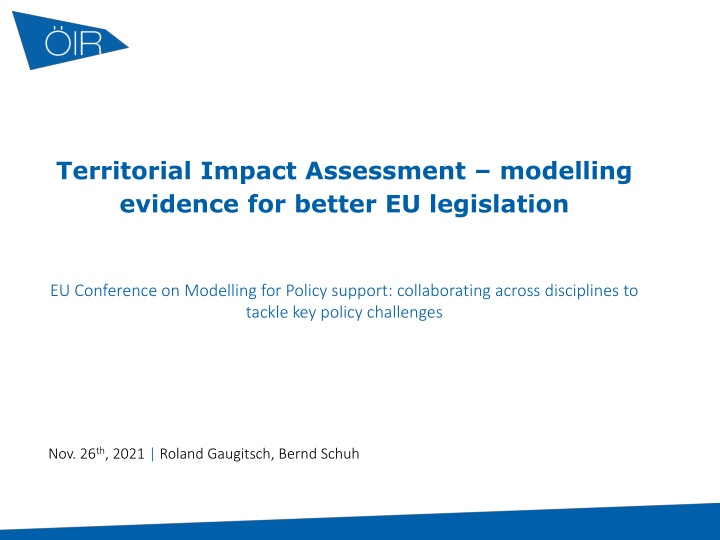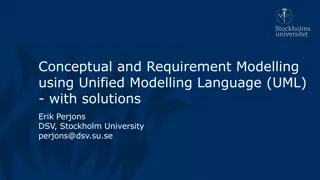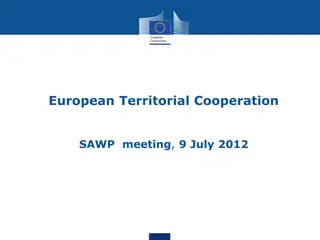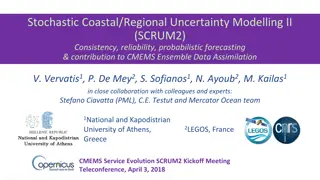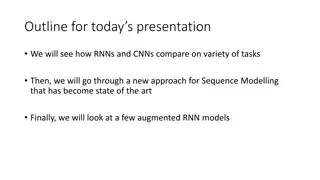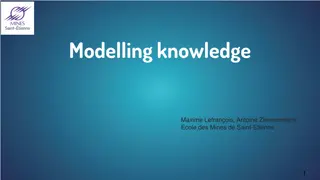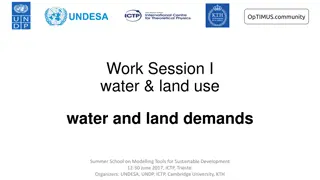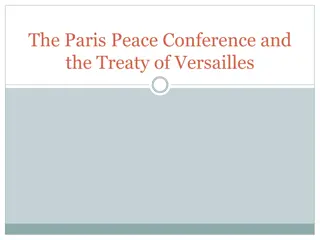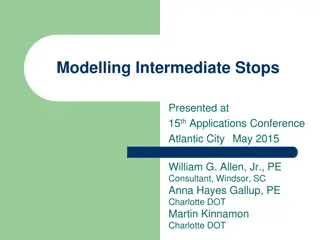Territorial Impact Assessment Modelling for EU Legislation
Territorial Impact Assessment modelling provides evidence to support better EU legislation by looking into the complexities of policy and decision-making processes. It focuses on understanding causal relationships and evaluating impacts on territories to improve policymaking. This involves identifying key assumptions, uncertainties, and robustness of results to enhance decision support tools for policymakers. The basis of this assessment includes considering territorial vulnerability, sensitivity, and impact analysis through a structured workshop procedure.
Download Presentation

Please find below an Image/Link to download the presentation.
The content on the website is provided AS IS for your information and personal use only. It may not be sold, licensed, or shared on other websites without obtaining consent from the author.If you encounter any issues during the download, it is possible that the publisher has removed the file from their server.
You are allowed to download the files provided on this website for personal or commercial use, subject to the condition that they are used lawfully. All files are the property of their respective owners.
The content on the website is provided AS IS for your information and personal use only. It may not be sold, licensed, or shared on other websites without obtaining consent from the author.
E N D
Presentation Transcript
Territorial Impact Assessment modelling evidence for better EU legislation EU Conference on Modelling for Policy support: collaborating across disciplines to tackle key policy challenges Nov. 26th, 2021 | Roland Gaugitsch, Bernd Schuh
Territorial Impact Assessment modelling evidence for better EU legislation Policy and decision making looking into the cristal ball Political decision making ex-ante problems of uncertainty, multiple criteria, various intertwined effects and unclear cause-effect relations Any decision support tool should not substitute policy-makers through a mathematical model but improve their understanding of the main features of the problem at hand Any modelling approach should therefore create knowledge about key assumptions, degree of uncertainty, robustness of results and overall technical and social defensibility of options chosen IA is supposed to serve this purpose (see EU Better Regulation Guidelines) 3
Territorial Impact Assessment modelling evidence for better EU legislation What makes a TIA a TIA? Some common elements regardless of everything: Territory i.e. unlike thematic IA (environmental, economic, ) focal point is a territory (regardless of its granulation NUTS, region, MS) bundling all thematic impacts in all their complexity Assessment i.e. measuring/ capturing something & comparing Impact i.e. a causal consequence of a trigger combination of an outside influence and a situation as it is Source of the impact i.e. any external influence e.g. policy, bundle of policies/ strategies, shocks (Covid, Brexit etc.) A TIA method will have to deal with all that! 4
Territorial Impact Assessment modelling evidence for better EU legislation The Basis - vulnerability concept each policy proposal Policies Regions of policy proposal Different for Independant Exposure Territorial sensitivity Territorial impact Workshop ESPON Data 5
Territorial Impact Assessment modelling evidence for better EU legislation The Basis - Process Workshop procedure: Identification of causal chains across 4 relevant dimensions pinpointing of main effects Selection of indicators suitable to depict effects Voting on strength and direction of impacts ( majority opinion ) Model calculations Intersecting for each region territorial sensitivity (i.e. normalised indicator value) with exposure (i.e. factor depending on strength and direction of impacts) Calculation of impact class for each region Mapping and interpretation Mapping of impact classes Group discussion and interpretation 6
Territorial Impact Assessment modelling evidence for better EU legislation Impact map Source: Committee of the Regions, TIA Workshop Work-life balance directive , 11thOctober 2017, Brussels 7
Territorial Impact Assessment modelling evidence for better EU legislation Challenges and solutions Data quality/lack of data Impacts are calculated relative to other regions, thus completeness of regional data is required Broad range of data sources and gap mitigation techniques are applied Exactness of results complete datasets are rare, mitigation techniques or missing values are necessary and influence results Relative impacts in broad impact classes are not distorted by single missing values -> overall results remain robust even with missing data or estimations Balancing effort necessary and robustness Policymakers are less likely to use non-mandatory assessment methodologies The model is easy to apply, easy to understand and produces quick yet policy relevant results which do not require excessive interpretation, thus incentivise their use 8
Territorial Impact Assessment modelling evidence for better EU legislation A flavour on how it worked so far The method has been endorsed in the Better Regulation Guideline Toolbox as recommended TIA method for legislative proposals It has been applied in 5 legislative proposals (ranging from EU Ports facility Directive, over Directive on Re-Use of Water to Clean Vehicle Directive) and passed in all cases the EU Scrutiny Board and all of these proposals have entered into force It has been applied in more than 40 cases for assessing territorial impacts for political decision making by DG Regio, the CoR and other EU institutions (e.g. INTERACT) 9
Additional information IR GmbH Bernd Schuh, Roland Gaugitsch schuh@oir.at | +43 1 533 87 47 1010 Wien, Franz-Josefs-Kai 27 Subscribe to our e-letter: www.oir.at/e-letter
